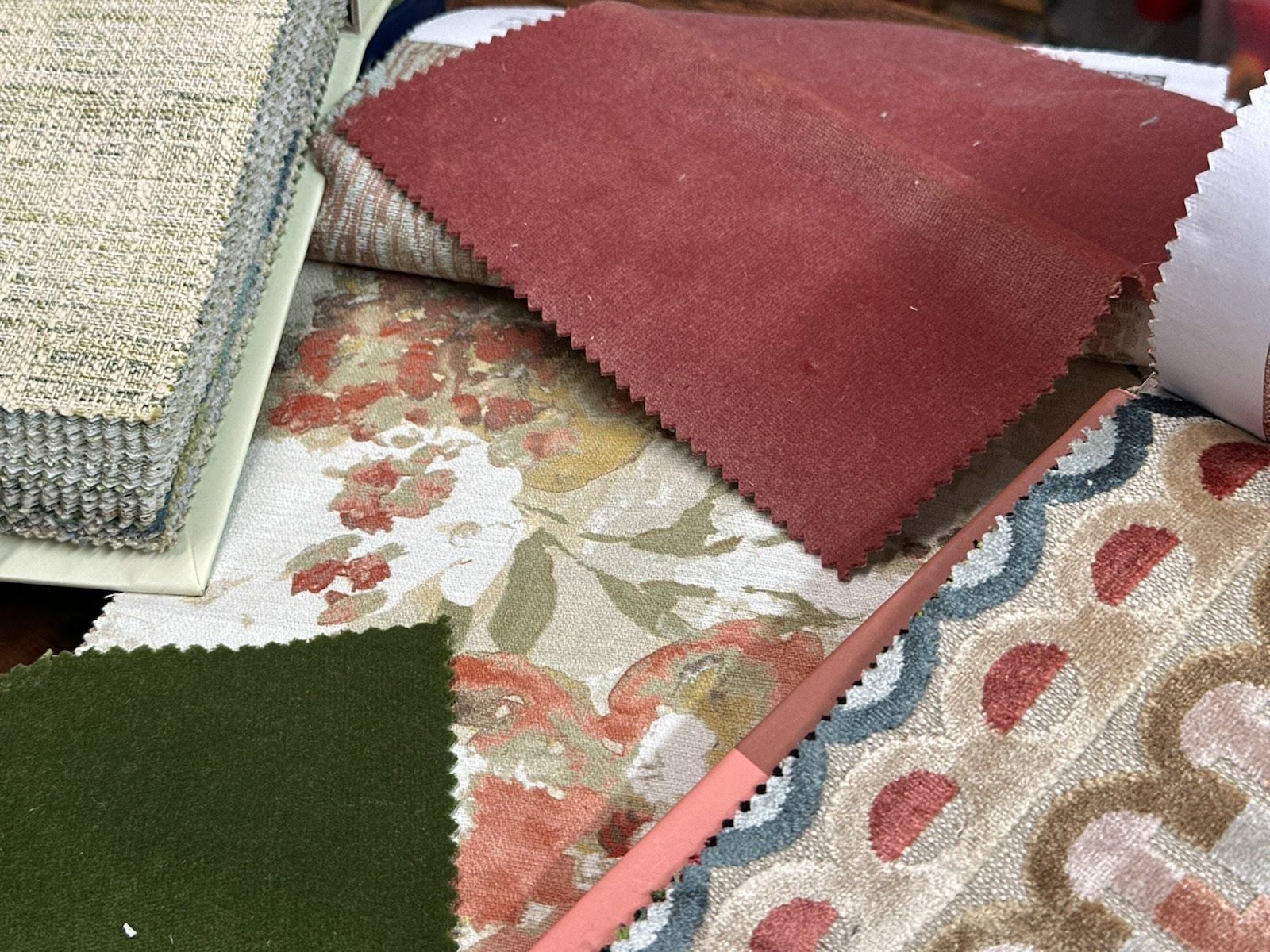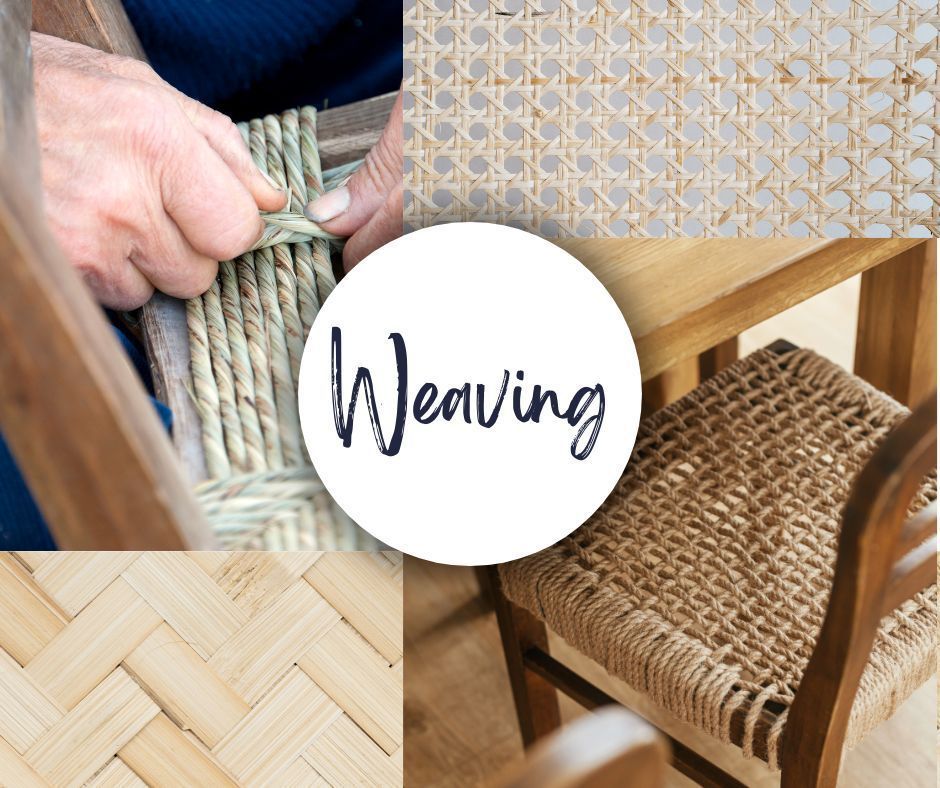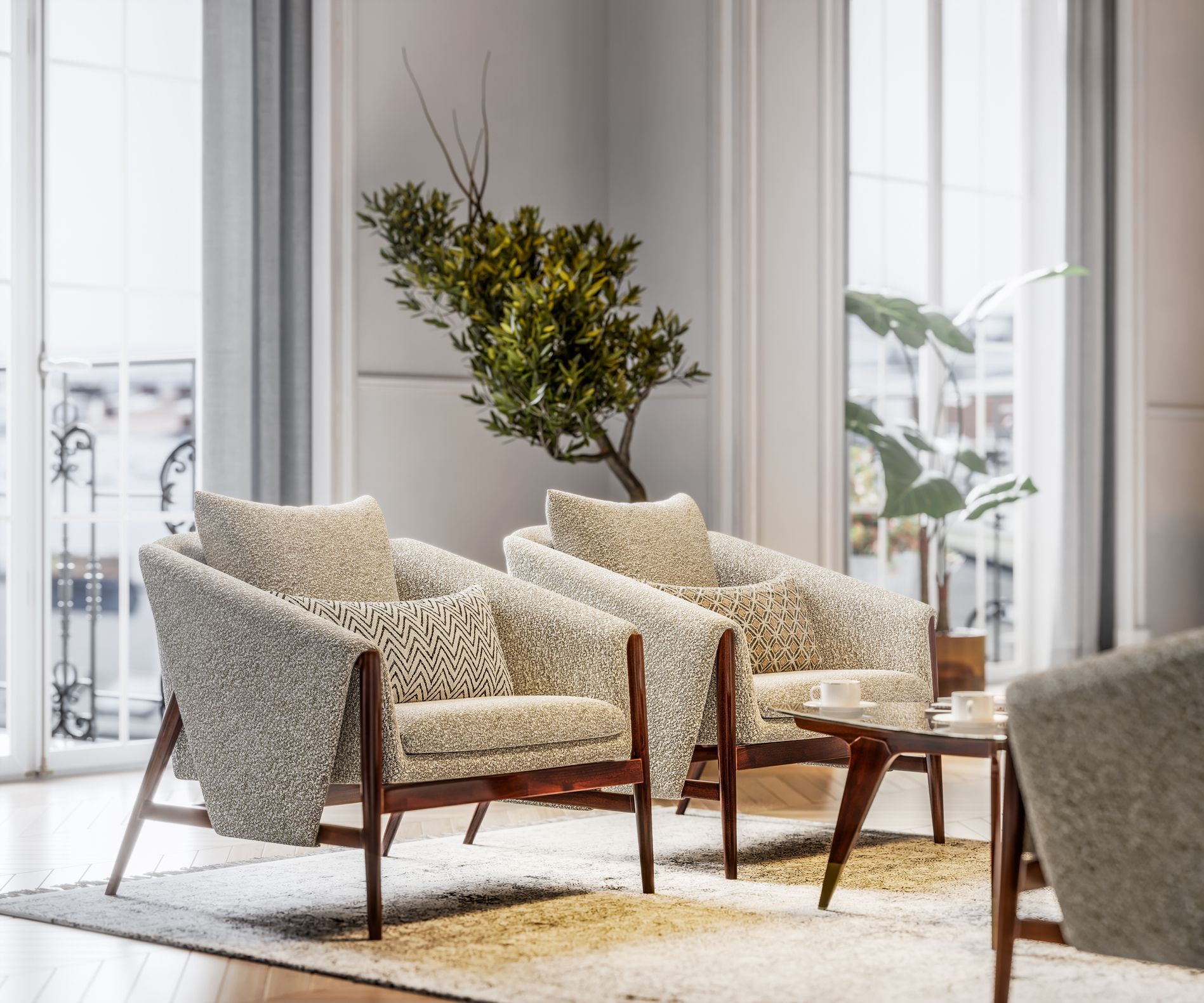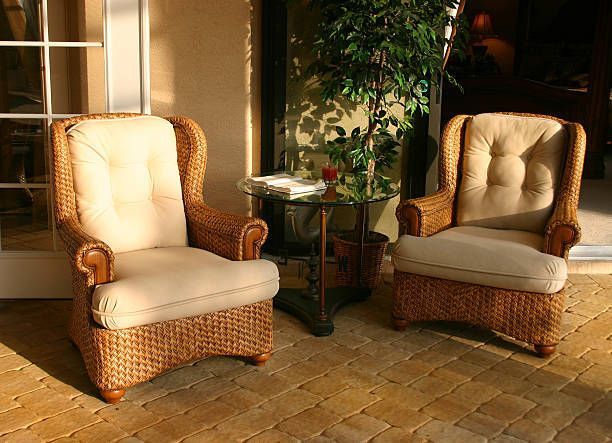Upholstery Fabric Selection
DON MAXWELL • September 26, 2025
Where Do I Start?

Walking into the world of upholstery fabrics can feel a little like being a kid in a candy shop—so many options, it’s hard to know where to start! But here’s the good news: picking a fabric for your custom piece doesn’t have to feel stressful or overwhelming. In fact, it should be fun.
When you buy furniture in a store, you’re usually limited to whatever fabrics that company works with. But when you’re reupholstering, the possibilities open up—you get to pick from a much wider world of colors, patterns, and textures. No compromises. Just something that’s tailored to you and your home.
The trick is to go into it with an open mind. Think of it as a chance to breathe new life into your space, with fabrics that add personality and reflect your style.
Here are a few questions that can help you get started:
What colors do I want to work with?
Sometimes the easiest place to begin is with color. Look around your room—at rugs, artwork, walls, or even accent pieces—and see which colors you’d like to pull out or complement. Just make sure you’re focusing on things that are going to stay in the room for a while, not something you might swap out next season. Since a custom piece is an investment, you’ll want it to feel “at home” in your space for the long run.
What kind of fabric fits my needs?
Think about how you’ll use the piece. Is it a formal chair that gets occasional use, or is it a sofa the whole family piles onto every day? That answer will guide what fabrics make the most sense.
For example:
- Velvet, silk and linen add a touch of luxury but need a little more care.
- Leather or woven fabrics are great for durability.
- Performance fabrics are a smart choice if spills and heavy use are part of daily life.
At Maxwell's Furniture Restoration
someone is always available to point you toward the best options based on your lifestyle.
Do I want a solid, a texture, or a pattern?
Each choice brings something different to the table:
Solids are timeless and easy to pair with just about anything.Textures give depth and interest without being busy.Patterns bring fun and personality—but keep in mind that larger repeats may need more fabric. Patterns can either make a piece the star of the room or quietly tie things together—it’s all about how bold you want to go.
Do I want to change up the look of the piece?
Don’t forget, fabric can totally transform a design. You might choose two different fabrics that complement each other—one for the body of the chair and another for the cushions. Or maybe you add contrast welting (that thin trim around the edges) or decorative nail heads for a little extra detail. These touches can make your piece look truly one-of-a-kind.
Final Thoughts...
Picking fabric is really about telling a story—your story—in your space. Try not to get stuck on one idea, because sometimes the fabric that works best isn’t the one you first imagined. Stay open, explore textures and colors you might not have considered, and enjoy the process.
In the end, whatever you choose is going to add personality and bring your furniture—and your home—to life. And that’s the most exciting part!
Contact Us

Many people assume that if their chair seat is woven, it's either wicker or cane. But did you know that there are actually several traditional weaving techniques used for chair seats, each with its own distinctive look, feel, and history? These methods have been passed down through generations and each one brings something unique to a chair’s design and durability. Here’s a brief rundown of some of the most popular weaving techniques: Caning Caning is one of the most popular and well-known chair weaving styles. It uses strips of rattan or reed to create a grid-like pattern, often in a honeycomb or diamond design. You'll often find caning on vintage or antique chairs, giving them a timeless look. Did you know that there are two types of caning? Hand caning involves individually weaving each strand by hand, which can be quite time-consuming but yields a beautiful, authentic result. Machine-made caning, on the other hand, offers a quicker and more cost-effective alternative, while still maintaining the classic appearance of the weave. (Stay tuned for a future blog where we’ll dive into the differences between hand and machine caning!) Rush Rush weaving is a traditional technique that uses twisted plant fibers, often from bulrushes or other natural grasses. These fibers are woven over the seat frame, creating a unique criss-cross pattern. It’s typically seen on rustic or country-style chairs, adding a warm, natural texture to the piece. Rush seats are durable, but they require maintenance over time due to their organic material. Danish Cord Danish cord is a popular choice for modern furniture design, particularly in mid-century modern chairs. This technique uses a natural fiber cord, often twisted paper or a synthetic alternative, woven in a clean, minimalist pattern. It’s a great balance of style and functionality, offering both durability and comfort, with a sleek, contemporary aesthetic. Shaker Tape Shaker tape, made of cotton or nylon, is typically used in solid or striped patterns to weave over the chair frame. This style is most often associated with Shaker-style furniture, which emphasizes simplicity and utility. Shaker tape provides a more contemporary look and is also incredibly easy to repair, making it a favorite among those seeking both practicality and style. Oak Splint/Split Weave Oak splint weaving involves using thin, flexible strips of oak wood, which are split and woven into intricate patterns to form a sturdy and natural-looking seat. This technique is commonly seen in early American furniture and provides a robust, timeless aesthetic. Oak splint seats are known for their durability and the natural beauty of the wood. Conclusion Each of these weaving techniques has its own set of qualities that contribute to the chair's aesthetic, comfort, and durability. The choice of weave often depends on the look you want to achieve, the level of maintenance you're prepared for, and the type of seating experience you desire. Whether you're restoring an old chair or looking to add a new piece to your collection, understanding the differences in these weaving techniques can help you make the right choice. Have a chair with a weave that needs repair or replacing? All our services are done on premise.







